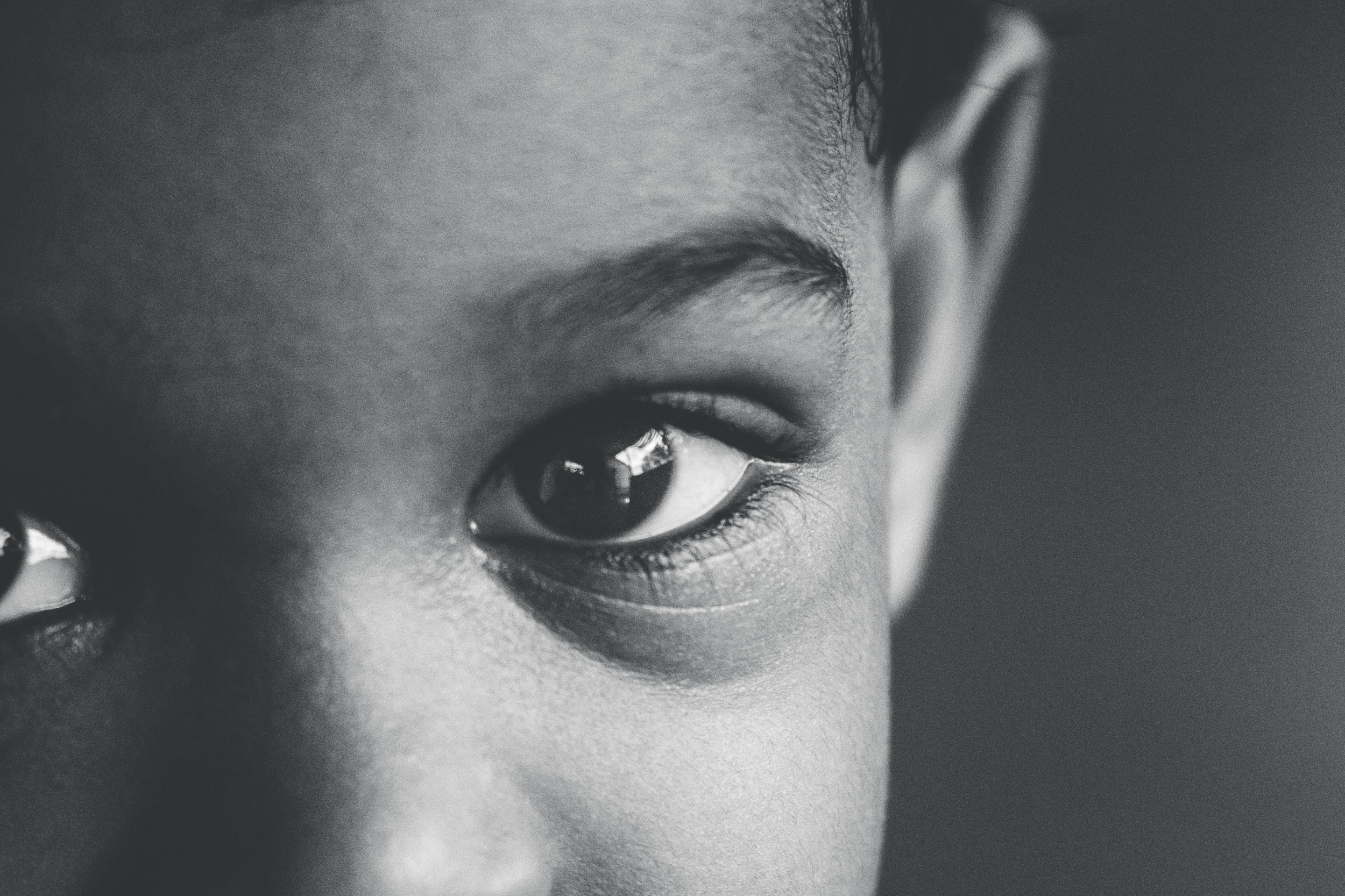A Call to Action
In April 2019 the Congressional Black Caucus (CBC) gathered to confront the pressing concern over Black children who were dying by suicide at an unprecedented rate in America.[1] After its meeting, the caucus determined that it was their responsibility to identify this crisis as a Black health emergency, and subsequently built a coalition that has since spent the past four years working towards solutions.
The suicidality issue amongst young Black Americans initially came as a surprise to the CBC and other researchers within the mental health sector. Historically, the suicide rate within the overall Black community has been lower than that of the national average, particularly in comparison to White Americans.[2] Even between 2021 and 2022 the Center for Disease Control (CDC) recorded 48,183 suicides within the United States, with only 7% of the group identifying as Black American.[3] However, a closer look at suicide trends began to indicate a growing rate in Black children. Price & Khubchandani (2020) analyzed data between 2001 and 2017, discovering that the rate of suicides in young Black men and women increased by 60% and 182%, respectively.[4] They also found that suicide was the second highest cause of death for Black adolescents.[5]
Research conducted by the CDC in 2021 also drew similar conclusions: Black male children aged five to 11 are at risk to the point where they are twice as likely to die by suicide over their White counterparts.[6] Similarly, the Journal of the American Academy of Child & Adolescent Psychiatry analyzed data between 2003 to 2017 and found Black girls between the ages of 15 to 17 had the largest percentage in suicides of all race and gender-based demographics.[7]
Understanding the “Why” behind Black Youth Suicidality
With Black children dying by suicide at such an unprecedented rate, the CBC began to focus on the causes, supposing that each cause would later have an accompanying solution it could implement in order to address this crisis. While all children are vulnerable to bullying, issues with self-identity, and hormonal changes that can cause depression and suicidal ideations, the CBC found that the compounding impacts of trauma, cultural stigmas, and socioeconomic barriers are uniquely faced by Black children. Mathew et al. (2020) found that of children who attempt suicide, having a hostile family environment and perceiving a lack of care from family members within a household have been discovered as contributing factors to suicidal behavior among adolescents and young adults.[8] Black children have the highest likelihood of witnessing home violence, experiencing communal stigmas in response to mental crisis, and enduring distressing racism and discrimination, all of which have the potential to exacerbate their likelihood of not wanting to live.[9,10] In the face of these compounding factors, young Black men often feel a sense of hopeless that is further aggravated by the racism and discrimination they face within society.[11] Black girls also combat the complex intersectionality of race and gender-based discrimination, encountering racism while also having a higher likelihood than their male counterparts of being sexually assaulted. With race and gender-based pressures mounting, young Black women have a singular struggle in overcoming sexual harassment, misogyny, and racism - all of which make them more vulnerable to depression and suicidal ideations.[12]
The Necessity of Support
For all children, familial and community support play pivotal roles in mental health outcomes. A strong support system can serve as a protective factor against suicide, especially for Black children where familial support and communalism are heavily integrated in Black culture.[13] In the absence of a strong support system, children often feel isolated and have a higher likelihood of experiencing depression and/or suicidal ideation.[14] In a 2020 report conducted by the U.S. Department of Health and Human Services, researchers concluded that Black children had a high likelihood of experiencing crisis in the two weeks prior to their death by suicide.[15] Further, nearly 40% of Black youth had a crisis or dispute with a family member, romantic partner, or friend before their death by suicide; 30% of this group had an argument within 24 hours of their death.[16] Within the Black community, providing accessible resources to navigate relationship issues and familial trauma can provide useful support to save a child’s life.
The Trouble in Exhibiting Mental Health Issues
For all children suffering from depression and mental health struggles, early detection and timely treatment are essential to mitigating their symptoms. However, Black children are the most likely to be suspended, expelled, or labeled with “behavioral issues” when they are actually displaying mental health issues. A 2015 study conducted by Okonofua & Eberhart concluded that educators often perceive black students’ behaviors as more problematic and more punishable than those of their White counterparts.[17] This study not only exhibits racial disparities in disciplinary action, but it also points to the isolation Black children face in the midst of a crisis.
The Lack of Mental Health Intervention
While intervention is key to preventing a child from getting to the point where they attempt suicide, mental health issues remain underdiagnosed and stigmatized within the Black community. In its 2020 report to Congress, the U.S. Department of Health and Human Services identified this contradiction: despite dying by suicide at a faster rate than any other racial/ethnic group, Black youth had lower reported rates of known mental health problems and documented histories of suicidal thoughts or plans. However, the lack of reported rates of mental health issues is not equivalent to these problems being nonexistent for Black children. On the contrary, the low rates of recorded mental health disorders that stand in contrast to the high rates of past suicide attempts suggest that Black youth are still experiencing depression, but they have limited access to mental healthcare and proper treatments. Not only do Black children face barriers to attaining effective mental health resources because of the high cost of therapy, but the American Psychological Association (APA) note the United States has a shortage of culturally-competent therapists across the country.[18] With over 88% of mental health providers identifying as white, young Black children continue to have more difficulty finding therapists that look like them and with whom they can identify.[19]
Mental Health Stigma Within the Black Community
Within the Black community, mental health conditions are not only misunderstood, but many Black adults view mental health conditions as a weakness.[20] As a result, people within this community may face embarrassment about their mental health condition and worry that they may be ostracized if they share how they are struggling with friends or family.[21] This perspective is not only damaging to Black adults, who will often mask their mental health disorders, but also to Black children who are the most vulnerable and often also the most susceptible to being silenced in a time of distress.[22]
Further, another obstacle for this cohort is that many Black Americans turn to spirituality and a faith-based community rather than seeking a medical diagnosis.[23] While spirituality is a proven source of resiliency for many ethnic minorities and can provide healthy outlets and reduce isolation, it is not always effective or effective enough in crisis.[24] In contrast, children should be encouraged to seek out multiple treatment avenues to ensure the highest chance of recovery from mental illness.
Solutions to the Suicide Crisis
The CBC concluded that addressing the issue of youth suicide within the Black community demanded a comprehensive approach that continues to consider the complex intersection of mental health, cultural, and socioeconomic factors. They note the following factors are essential to halting the trend of Black children ending their lives:
Schools stand at the forefront of community-based care and they can close the gap in mental-health access by offering all students access to affirming environments and well-trained professionals. Unlike mental health care provided by hospitals, mental health professionals in schools have the ability to provide resources and assistance to students without the barriers of insurance and financial security. Schools within a child’s community also have the potential to help a child overcome their mental health challenges with culturally-relevant care.
Expanding access to underprivileged communities has the potential to give Black children access to treatment that would otherwise be unavailable. As the American Psychological Association (APA) asserts, telehealth with expanded coverage via the assistance of insurance companies is an equity-based solution that may allow Black children to get the treatment they are seeking.[25]
Black researchers must also be given adequate funding and support in order to narrow the knowledge gap that leaves Black-specific illnesses underreported. Research topics proposed by Black scientists are less likely to be funded, leaving profound gaps in the level of understanding that is required to protect Black youths from the unique challenges they face.
In 2019, Congresswomen Coleman and Napolitano led the CBC in proposing the “Pursuing Equity in Mental Health Act.” The act has successfully passed the House of Representatives, and once it is officially enacted it will provide $750 million annually between fiscal years 2024 to 2029 for the National Institute on Minority Health and Health Disparities.[26] The future act will also authorize $150 million dollars to the National Institutes of Health (NIH) to build mental health facilities within Black communities, support clinical research, and work to end racial/ethnic disparities in healthcare.[27]
Ensuring Children Have Hope in their Future
Ultimately, Black children face the unique challenge of navigating their lives at the intersection of race, gender, and sexual orientation all while carrying the basic challenge of simply “being kids”. With societal pressures and feelings of isolation becoming prevalent within the current generation, it is essential for the adults within their lives to make sure that they are protected and supported. Children are a vulnerable population who are not fully capable of self-advocacy, and for this reason the rising suicide rates among Black children necessitates collective action. By addressing the mental health stigma within the Black community, systemic inequalities and cultural factors, American society will build a mental healthcare system where, regardless of their background, all children feel supported and capable of overcoming trauma.
If you or someone you know is struggling with depression, hopelessness and/or suicidal thoughts, please call 911, 988, or go to the closest emergency room. Individuals seeking non-crisis support can also reach out to a licensed mental health professional (e.g., a psychotherapist, psychologist or psychiatrist) for guidance and additional resources.
Contributed by: Kate Campbell
Editor: Jennifer (Ghahari) Smith, Ph.D.
References
1 Coleman, B.W. (2023). Emergency Task Force on Black Youth Suicide and Mental Health.https://watsoncoleman.house.gov/suicidetaskforce/
2 Kung, K. C., Liu, X., & Juon, H. S. (1998). Risk factors for suicide in Caucasians and in African-Americans: a matched case-control study. Social psychiatry and psychiatric epidemiology, 33(4), 155–161. https://doi.org/10.1007/s001270050038
3 Langston, L. & Truman, J.L. (2014). Socio-Emotional Impact of Violence. Bureau of Justice Statistics. https://bjs.ojp.gov/library/publications/socio-emotional-impact-violent-crime
4 Price, J. H., & Khubchandani, J. (2019). The Changing Characteristics of African-American Adolescent Suicides, 2001-2017. Journal of community health, 44(4), 756–763. https://doi.org/10.1007/s10900-019-00678-x
5 Ibid
6 Meza, J.L., Patel, K., Bath, E. (2022). Black Youth Suicide Crisis: Prevalence Rates, Review of Risk and Protective Factors, and Current Evidence-Based Practices. Focus: The Journal of Lifelong Learning in Psychiatry, 20(2), 197-203. https://doi.org/10.1176/appi.focus.20210034
7 Sheftall, A. H., Vakil, F., Ruch, D. A., Boyd, R. C., Lindsey, M. A., & Bridge, J. A. (2022). Black Youth Suicide: Investigation of Current Trends and Precipitating Circumstances. Journal of the American Academy of Child and Adolescent Psychiatry, 61(5), 662–675. https://doi.org/10.1016/j.jaac.2021.08.021
8 Mathew, A., Saradamma, R., Krishnapillai, V., & Muthubeevi, S. B. (2021). Exploring the Family factors associated with Suicide Attempts among Adolescents and Young Adults: A Qualitative Study. Indian journal of psychological medicine, 43(2), 113–118. https://doi.org/10.1177/0253717620957113
9 Chopra, S. (2022, September 9). Black girls are experiencing record rates of self-injury and death by suicide. https://youthtoday.org/2022/09/black-girls-are-experiencing-record-rates-of-self-injury-and-death-by-suicide/
10 Langston, L. & Truman J.L. (2014)
11 Meza, J.L., Patel, K., Bath, E. (2022)
12 American Academy on Child and Adolescent Psychiatry. (2022) AACAP Policy Statement on Increased Suicide Among Black Youth in the US. https://www.aacap.org/aacap/Policy_Statements/2022/AACAP_Policy_Statement_Increased_Suicide_Among_Black_Youth_US.aspx
13 Langston, L. & Truman, J.L. (2014)
14 Bethune, S. (2022). Increased need for mental health care strains capacity. American Psychological Association (APA). https://www.apa.org/news/press/releases/2022/11/mental-health-care-strains
15 Okonofua, J. A., & Eberhardt, J. L. (2015). Two Strikes: Race and the Disciplining of Young Students. Psychological Science, 26(5), 617–624. https://doi.org/10.1177/0956797615570365
16 Okoya, Wenimo. (2022, March 30). The fight for Black Lives needs to happen in schools. The Hechinger Report. https://hechingerreport.org/opinion-the-fight-for-black-lives-needs-to-happen-in-schools/
17 Okonofua, J.A., & Eberhardt, J.L. (2015)
18 Ward, E. C., Wiltshire, J. C., Detry, M. A., & Brown, R. L. (2013). African American men and women's attitude toward mental illness, perceptions of stigma, and preferred coping behaviors. Nursing research, 62(3), 185–194. https://doi.org/10.1097/NNR.0b013e31827bf533
19 Meza, J.L., Patel, K., Bath, E. (2022)
20 Ibid.
21 Okonofua, J. A., & Eberhardt, J. L. (2015) Nguyen A. W. (2020).
22 Bethune (2022)
23 Religion and Mental Health in Racial and Ethnic Minority Populations: A Review of the Literature. Innovation in aging, 4(5), https://doi.org/10.1093/geroni/igaa035
24 Ibid.
25 The Mental Health Liaison Group.(2023). MHLG Letter of Support - Pursuing Equity in Mental Health Act 118th Congress. https://adaa.org/MHLG098402
26 Ibid.
27 Ibid.



